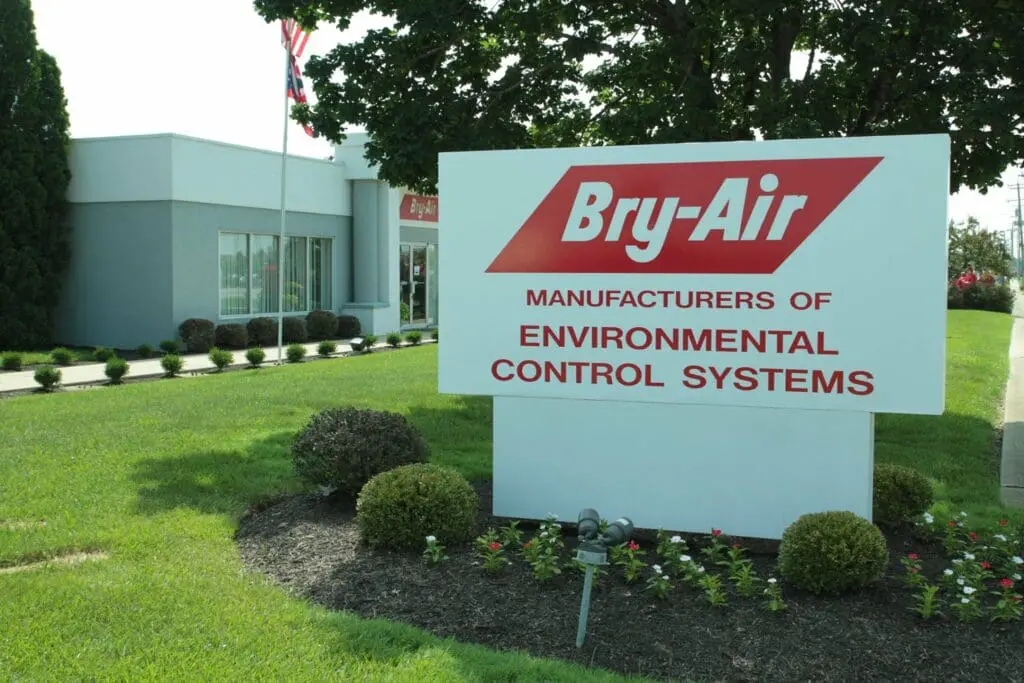Glossary of Terms
Absorbent: A material which, due to an affinity for certain substances, extracts one or more such substances from a liquid or gaseous medium with which it is in contact and which changes physically or chemically, or both, during the process. Calcium chloride is an example of a solid absorbent, while solutions of lithium chloride, lithium bromide, and the ethylene glycols are examples of liquid absorbents.
Absorption: A process whereby a material extracts one or more substances present in an atmosphere or mixture of gases or liquids, accompanied by physical change, chemical change, or both, of the material.
Activated Alumina: A form of aluminum oxide which adsorbs moisture readily and is used as a drying agent.
Activated Carbon: A form of carbon made porous by special treatment by which it is capable of adsorbing various odors, anesthetics and other vapors.
Adiabatic Process: A thermodynamic process during which no heat is added to, or taken from, a substance or system.
Adsorbent: A material which has the ability to cause molecules of gases, liquids or solids to adhere to its internal surfaces without changing the adsorbent physically or chemically. Certain solid materials such as silica gel, activated carbon and activated alumina have this property.
Adsorption: The action, associated with surface adherence, of a material in extracting one or more substances present in an atmosphere or mixture of gases and liquids, unaccompanied by physical or chemical change. Commercial adsorbent materials have enormous internal surfaces.
Air, Saturated: Moist air in which the partial pressure of the water vapor is equal to the vapor pressure of water at the existing temperature. This occurs when dry air and saturated water vapor coexist at the same dry-bulb temperature.
Air Changes: A method of expressing the amount of air leakage into or out of a building or room in terms of the number of building volumes or room volumes exchanged.
Capacity, Condensing Unit: The refrigerating effect in Btu per hr. produced by the difference in total enthalpy between refrigerant liquid leaving the unit and the total enthalpy of the refrigerant vapor entering the unit. Generally measured in tons of Btu per hr.
Condensation: The process of changing a vapor into liquid by the extraction of heat. Condensation of steam or water vapor is effected in either steam condensers or dehumidifying coils and the resulting water is called condensate.
Dehumidification: The condensation of water vapor from air by cooling below the dewpoint or removal of water vapor from air by chemical or physical methods.
Desiccant: Any absorbent or adsorbent, liquid or solid, that will remove water or water vapor from a material. In a refrigeration circuit the desiccant should be insoluble in the refrigerant.
Enthalpy: Thermodynamic property of a substance defined as the sum of its internal energy plus the quantity Pv/J, where P = pressure of the substance, v = its volume, and J = the mechanical equivalent of heat. Formerly called by the obsolescent names total heat and heat content.
Heat, Latent: Change of enthalpy during a change of state, usually expressed in Btu per lb. With pure substances, latent heat is absorbed or rejected at constant pressure.
Heat, Sensible: Heat which is associated with a change in temperature; specific heat exchange of temperature; in contrast to a heat interchange in which a change of state (latent heat) occurs.
Humidity: Water vapor within a given space.
Humidity, Absolute: The weight of water vapor per unit volume.
Humidity, Percentage: The ratio of the weight of water vapor associated with a pound of dry air to the weight of water vapor associated with a pound of dry air saturated at the same temperature.
Humidity, Relative: The ratio of the mol fraction of water vapor present in the air, to the mol fraction of water vapor present in saturated air at the same temperature and barometric pressure; approximately, it equals the ratio of the partial pressure or density of the water vapor in the air, to the saturation pressure or density, respectively, of water vapor at the same temperature.
Humidity, Specific: Weight of water vapor (steam) associated with one lb weight of dry air, also called humidity ratio.
Hygrometer: Instrument responsive to humidity conditions (usually relative humidity) of the atmosphere.
Hygroscopic: Absorptive of moisture, readily absorbing and retaining moisture.
Permeability: Water vapor permeability is a property of a substance which permits passage of water vapor, and is equal to the permeance of a 1 in. thickness of the substance. When permeability varies with psychrometeric conditions, the spot or specific permeability defines the property at a specific condition. Permeability is measured in perm-inches.
Pressure, Vapor: The pressure exerted by a vapor. If a vapor is kept in confinement over its liquid so that the vapor can accumulate above the liquid, the temperature being held constant, the vapor pressure approaches a fixed limit called the maximum, or saturated, vapor pressure, dependent only on the temperature and the liquid. The term vapor pressure is sometimes used as synonymous with saturated vapor pressure.
Psychrometric Chart: A graphical representation of the thermodynamic properties of moist air.
Silica Gel: A form of silicon dioxide which adsorbs moisture readily and is used as a drying agent.
Sorbent: A material which extracts one or more substances present in an atmosphere or mixture of gases or liquids with which it is in contact, due to an affinity for such substances.
Temperature, Dew Point: The temperature at which the condensation of water vapor in a space begins for a given state of humidity and pressure as the temperature of the vapor is reduced. The temperature corresponding to saturation (100 percent relative humidity) for a given absolute humidity at constant pressure.
Temperature, Dry-Bulb: The temperature of a gas or mixture of gases indicated by an accurate thermometer after correction for radiation.
Temperature, Wet-Bulb: Thermodynamic wet-bulb temperature is the temperature at which liquid or solid water, by evaporating into air, can bring the air to saturation adiabatically at the same temperature. Wet-bulb temperature (without qualification) is the temperature indicated by a wet-bulb psychrometer constructed and used according to specifications.
Ton of Refrigeration: A useful refrigerating effect equal to 12,000 Btu per hr.; 200 Btu per min.
Vapor Barrier: A moisture-impervious layer applied to the surfaces enclosing a humid space to prevent moisture travel to a point where it may condense due to lower temperature.










The above Trademarks and Copyrights belong to Bry-Air (Asia) Pvt. Ltd.
Bry-Air, Inc. 10793 State Route 37 West, Sunbury, OH 43074
Toll Free: (877) 427-9247 | Phone: (740) 965-2974 | Fax: (740) 965-5470
Sales: sales@bry-air.com | Service: service@bry-air.com | Parts: parts@bry-air.com










